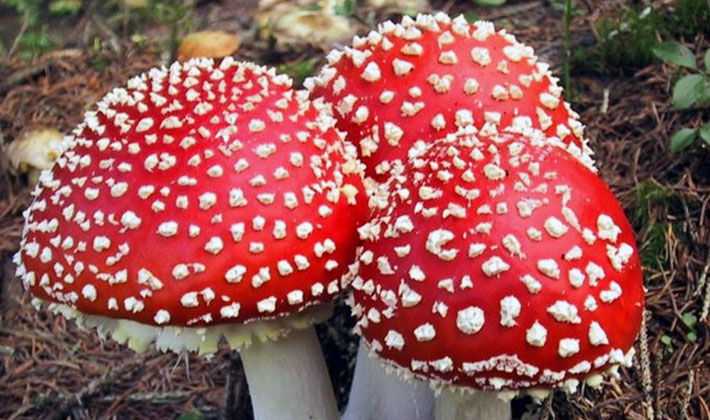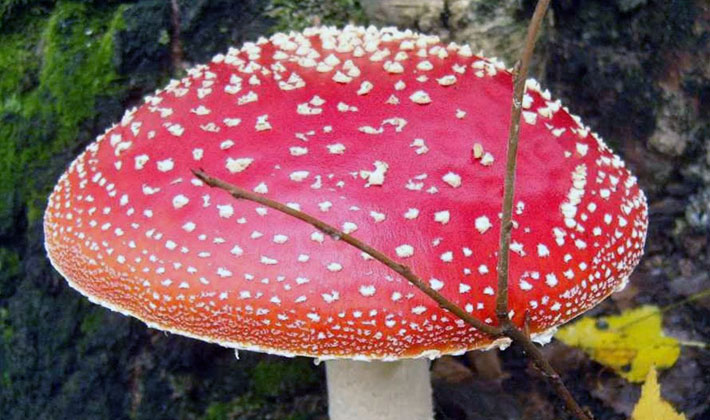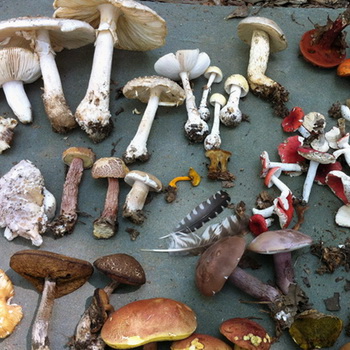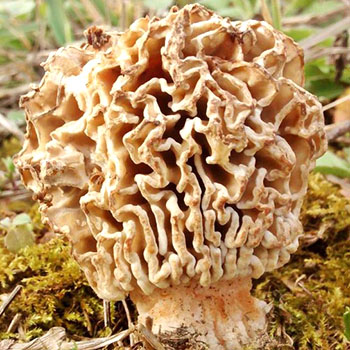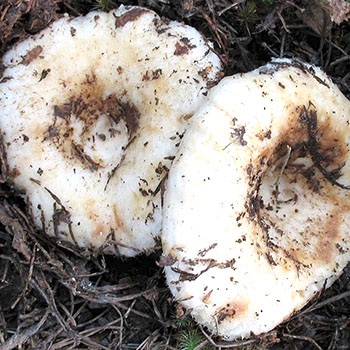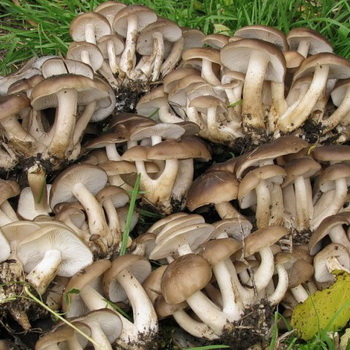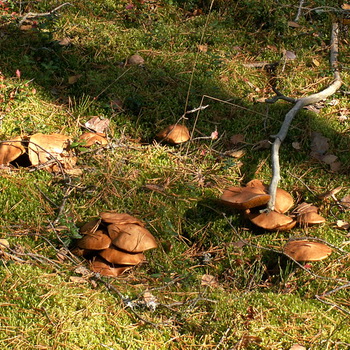Types of fly agaric: main features
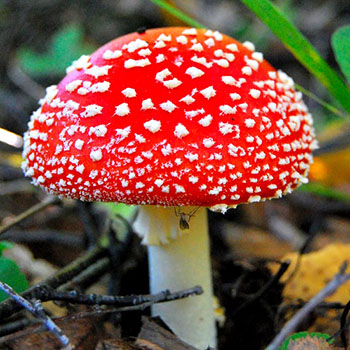
The main feature of all types of fly agaric is the sharp difference in appearance in the growth process. Young mushrooms are stocky and beautiful, reminiscent of mushrooms from afar. But God forbid you to confuse them!
Fly agaric is inedible and poisonous. With growth, they significantly change shape to large open umbrellas with thick hats. True, it is sometimes written that gray-pink fly agarics are conditionally edible after two or three boils, but still this is not recommended, since you can confuse them with other poisonous species. June fly agarics grow near paths and in small forest glades.
You will learn about how fly agaric mushrooms of different species look, and where they grow, in this material.
Amanita gray pink
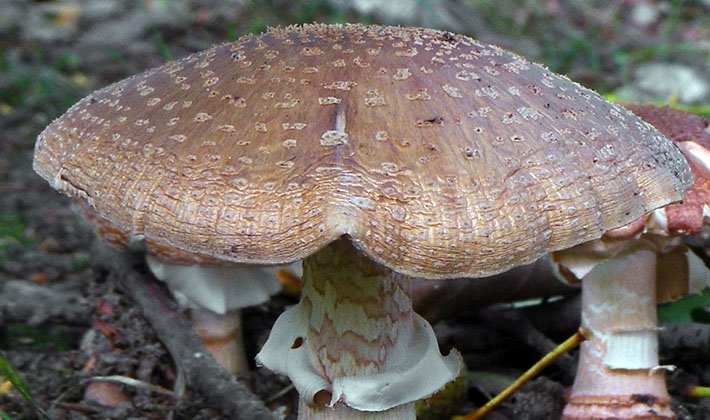
Habitats of gray-pink fly agaric (Amanita rubescens): coniferous and deciduous forests, often along forest paths, grow either in groups or singly.
Season: June-November.
The hat has a diameter of 5-15 cm, sometimes up to 18 cm, first spherical, later convex and convex-spread. A distinctive feature of the species is a pinkish-brown hat with many gray or pinkish spots from large scales, as well as a gray-pink leg with a ring with hanging edges and a thickening at the base, belted by the remains of a volva.
As can be seen in the photo, in this species of fly agaric, the edges of the cap do not have the remains of the bedspread:
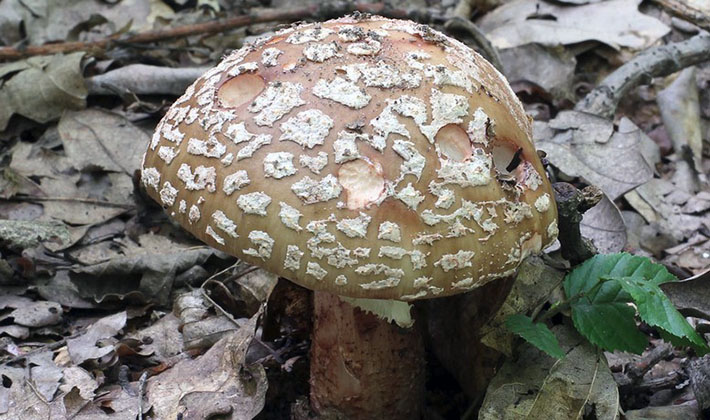
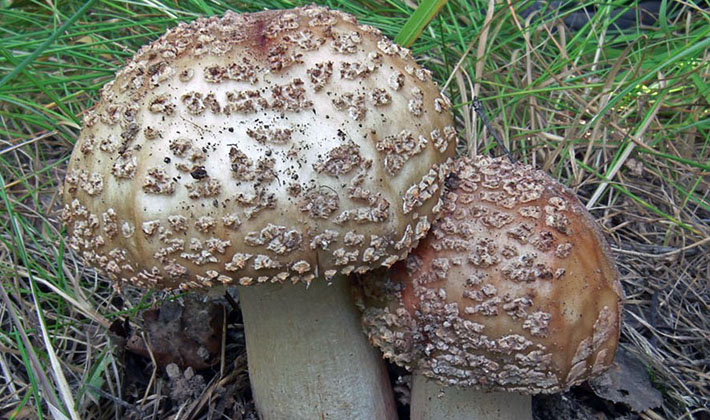

The stalk of this species of fly agaric mushrooms is long, 5-15 cm tall, 1-3.5 cm thick, white, hollow, later gray or pinkish. The base of the leg has a potato thickening with a diameter of up to 4 cm, on which there are ridges or belts from the remnants of Volvo. On the leg in the upper part there is a large bright ring with grooves on the inner surface.
Pulp: white, turns pink or red over time.
The discs are free, frequent, soft, first white or cream color.
Variability. The color of the hat can vary from gray-pink to pinkish-brown and reddish.
Similar views. Amanita gray-pink similar to Amanita pantherina (Amanita pantherina), which is light brown.
They are conditionally edible after boiling at least 2 times with the replacement of water, after which they can be fried. They have a sharp taste.
Amanita panther
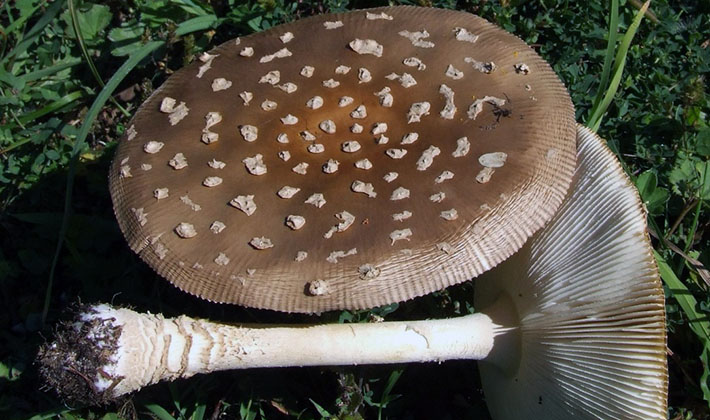
Where Amanita pantherina grows (Amanita pantherina): coniferous and deciduous forests grow either in groups or singly.
Season: June-October.
The hat has a diameter of 5-10 cm, sometimes up to 15 cm, first spherical, later convex or flat. A distinctive feature of the species is the olive-brown or olive-colored hats with white spots from large scales, as well as a ring and a multilayer Volvo on the leg. The surface of the hat is smooth and shiny. Scales easily come off, leaving the hat smooth.
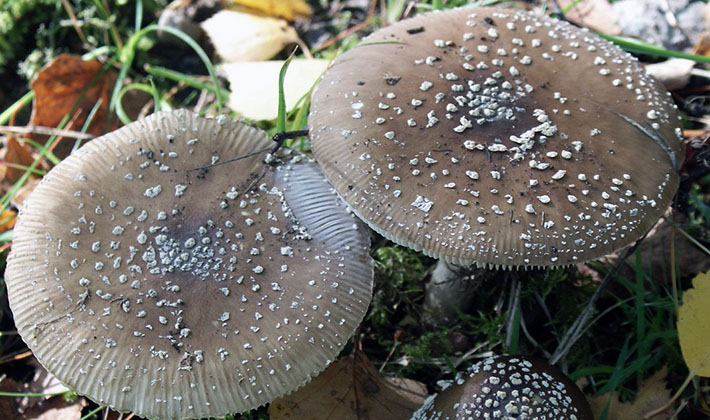
The leg is long, 5-12 cm high, 8-20 mm thick, grayish-yellowish, with a powdery coating. The leg is thinned from above and tuberoid-expanded near the base with a white multilayer Volvo.On the leg is a ring that disappears over time. The surface of the legs is slightly fleecy.
Pulp: white, does not change color, watery, almost odorless and sweetish in taste.
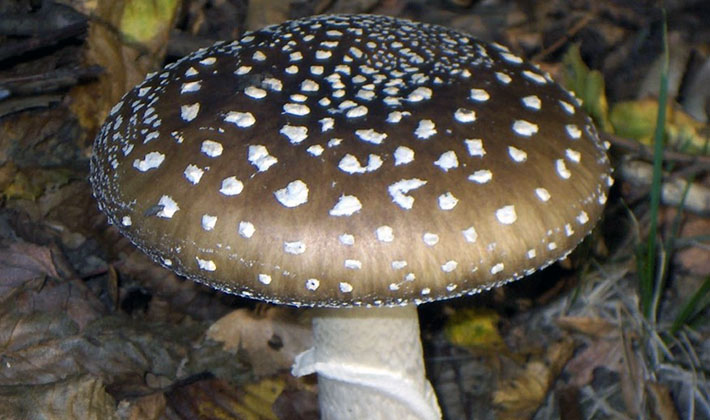
The records are free, frequent, high.
Variability. The color of the hat varies from light brown to gray-olive and light brown.
Similar views. According to the description, this type of fly agaric is similar to the fly agaric gray-pink (Amanita rubescens), which is distinguished by a pinkish-gray color of the hat and a wide ring on the leg.
Poisonous.
Amanita muscaria

Red fly agaric (Amanita muscaria) has been known to all residents since childhood. In September, a huge number of these beauties appear. At first they look like a reddish ball with white dots on the leg. Later they become in the form of an umbrella. They grow everywhere: near villages, villages, in the ditches of country cooperatives, at the edges of forests. These mushrooms are hallucinogenic, inedible, but possessing medicinal properties, but their independent use is illegal.
Habitats: deciduous, coniferous and deciduous forests, on sandy soil, grow either in groups or singly.
When red fly agarics grow: June-October.
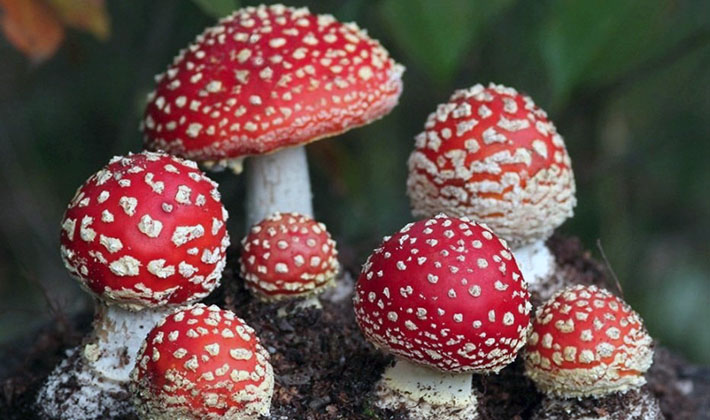
The hat has a diameter of 5-15 cm, sometimes up to 18 cm, first spherical, later convex or flat. A distinctive feature of the species is a bright red hat with characteristic white specks of scales. The edges are often indented.
Leg long, 4-20 cm high, IQ-25 mm thick, yellowish, with powdery coating. At the base, the leg has a significant thickening of up to 3 cm, without Volvo, but with scales on the surface. On the stem, young specimens may have a ring, which disappears over time.
Pulp: white, then pale yellow, soft with an unpleasant odor.
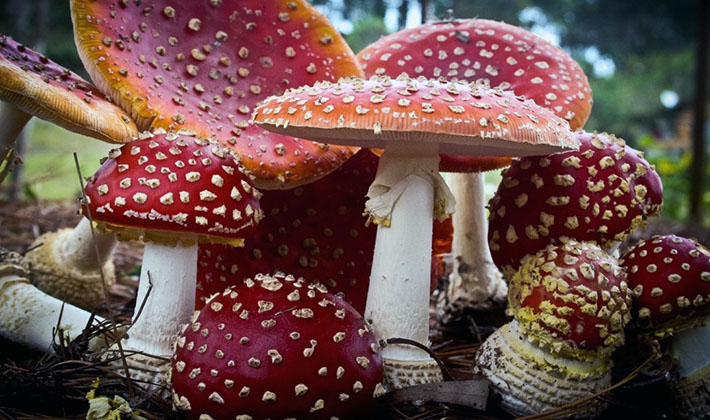
The plates are free, frequent, soft, first white, later yellowish. Long plates alternate with short ones.
Variability. The color of the cap of the inedible mushrooms of fly agaric can vary from bright red to orange.
Similar views. Poisonous fly agaric red can be confused with an edible Caesar mushroom (Amanita caesarea), which is distinguished by a bright red or golden orange hat without white bumps and yellow legs.
Poisonous, cause severe poisoning.
See how red fly agarics look in these photos:
